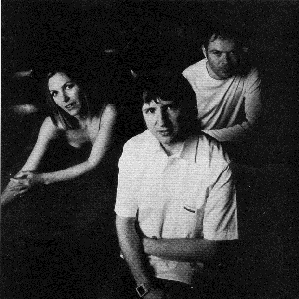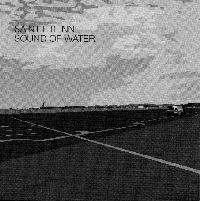Etienne: A ‘saintly’ creation
By Aaron Lovell
Photo Editor
|
|
| Bob Stanley, Pete Wigs and Sarah Cracknell, members of the British rock group Saint Etienne, plug their newest album, “Sound of Water.” |
Most good records have the ability to recall a time and place in the distant personal, mythical or historical past.
The first Stone Roses record documents the early ‘90s moment when dance, rock and pop eclipsed one another and Madchester was the center of the earth. “London Calling” always seemed to be situated somewhere in between the capital suburbs, the corner of 57th Street and Broadway and the Spanish Civil War. The Doors carried with them the mark of a strange, late-’60s Hollywood Babylon, while anything by Bruce Springsteen is forever tied to the New Jersey turnpike.
Much has been written about Saint Etienne’s place on the musical/historical timeline. Most critics and fans alike place the group’s music at the height of swinging London, a spring day spent rambling along Carnaby Street (or, as suggest by Jon Savage in the liner notes to “Foxbase Alpha,” a rainy day record shopping in Camden Town). Or maybe an afternoon spent on a gorgeous beach on the coast of Spain or an autumn afternoon in Central Park: The group produces lovely cosmopolitan pop that evokes the relatively dust-free memories of a lost past, drawing upon the rich history of dance and pop music. This tradition is continued on the group’s newest album, “Sound of Water,” available stateside on Sub Pop.
 |
| Bob Stanley, Pete Wigs and Sarah Cracknell, members of the British rock group Saint Etienne, plug their newest album, "Sound of Water." |
To date, Saint Etienne, comprised of Bob Stanely, Pete Wiggs and Sarah Cracknell (two boyhood record collecting chums and a smashing blonde), have released four albums proper and an Adidas hold-all of singles, Japanese imports and fanclub releases, as well as a singles collection, remix compilation and B-sides album. And the titles of four of them reference, directly or indirectly, Brian Wilson in some way. The first two records, 1991’s “Foxbase Alpha” and 1993’s “So Tough” were both patched together with samples of every stripe, from DePaul alum Joe Mantegna to Madness frontman Suggs to Rush’s “Spirit of the Radio” to a French football broadcast.
The songs are as varied as the samples, building upon the group’s near encyclopedic knowledge of popular music, including a Soul-II-Soul-ish cover of Neil Young’s “Only Love Can Break Your Heart,” as well as most of the singles that defined the early years of the Heavenly label.
Next came 1994’s surprisingly sample-less “Tiger Bay,” which combined strumming folk songs and stomping techno, continuing the group’s grateful acknowledgment of dance music within more traditional pop templates. This was followed by the singles collection “Too Young to Die,” thought of as an epitaph in 1995 and, the following year, “Casino Classics,” a compendium of remixes featuring a roll call of the biggest, brightest names in the dance game.
These albums, however, did not prepare fans for what happened in spring 1998: Saint Etienne released a pop record, in every sense of the word, painfully researched and recorded with Tore Johansson in Malmo, Sweden. “Good Humor” was a record that attempted to pay homage to and develop upon the records Stanely and Wiggs had championed for so long; the result was an album that reached for the minimal, warm pop heights of legend.
And they still had some Trouser Enthusiasts, Add N to X and Kid Loco remixes (one, of course, namechecking Uri Geller).
That’s an oversimplified nutshell guide to a group whose activities are in no way conducive to oversimplified nutshells. The break with former U.S. representative Warner Bros. allowed Saint Etienne to hook up with indie label Sub Pop; it would seem the group will be a diversifying factor in the label’s portfolio and, so far, the arrangement seems to be working out nicely.
The initial U.S. release of “Good Humor” included a bonus disc of odds and sods, the label released a domestic-only EP last spring and the new record will be available on domestic vinyl—no doubt a long way from the confused days of the Warner Brothers reign, where they were marketed as more of a club act, resulting in strange remixes and odd track listings.
Which brings this whole mess around to the newest release, the aforementioned “Sound of Water.” Moving away from the more uniform pop sound of “Good Humor” and back into more electronic territory, Saint Etienne enlisted Sean O’Hagan from the High Llamas and German electronic outfit To Rocco Rot for production duties (and author/music critic Simon Reynolds for the liner notes). The first single, “How We Used to Live,” clocks in close to 10 minutes, assuring limited airplay; short attentions spans lose, as the sprawling trefoil is one of the group’s best, shifting gears three times and bringing about half serious comparisons to Radiohead’s “Paranoid Android.” But where “Android” celebrated the anxieties of the information age, “How We Used to Live” urges the listener to forget about things for a while and get lost in the atmospherics.
The rest of the album follows suit. Not Saint Etienne’s most accessible release by a long shot, the record requires multiple listenings before things sink in; with repeated listens the listener is rewarded with a solid, well-crafted album. Much like the title suggests, the beauty of this album is in its intricacies; much like Simon Reynolds suggests, using headphones will help the listener pick up on the subtleties found throughout the record. “Sound of Water” also sees the group utilizing (a few) samples, although not as many as their pre-”Tiger Bay” days. The influence of the unique styles of the producers is also evident, as well as the ghostly presence of a certain Mr. Wilson from California.
Saint Etienne’s music has never been completely calibrated with the rest of the music world. It has always been a bit off, a bit left of center. They’ve always been a few years ahead of their time, or maybe a few years behind their time.
In any case, this tradition continues with “Sound of Water,” a record that, while the rest of the world begs to differ, strikes a blow for the beauty of subtle intricacies—like the sand on that Spanish beach or the cool air in the Camden tube station. “Sound of Water” conjures up these images—down to the minutest details.
